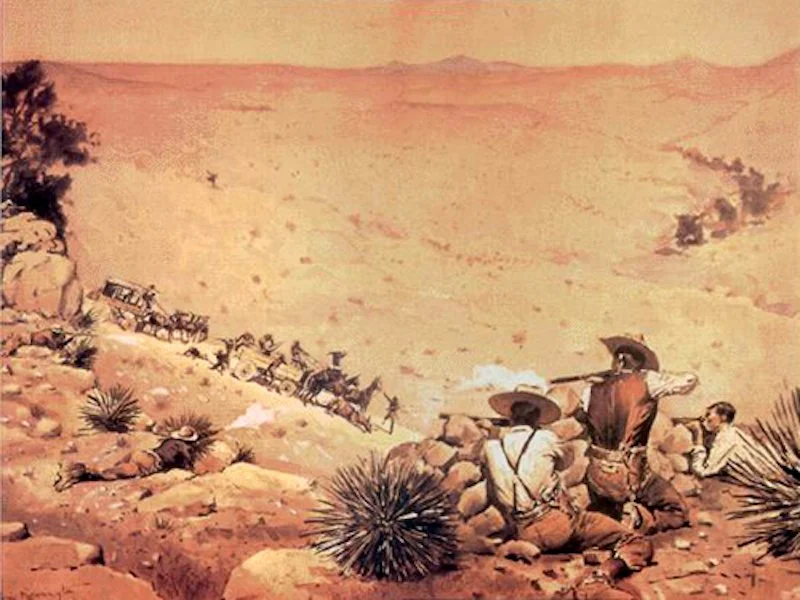
The Legend of the Bandit of the Cascades: Unraveling the Tale of Black Bart
In the late 1800s, the Sierra Nevada mountains bore witness to a series of daring stagecoach robberies that would go down in history. The mastermind behind these heists was the enigmatic Black Bart, a bandit who gained notoriety for leaving poetic messages at some of his crime scenes. Here, we unravel the facts and dispel the myths surrounding the legend of Black Bart.
Born as Charles Earl Boles (or Bowles), the exact date and place of Black Bart’s birth are uncertain. Some sources suggest he was born in 1830 or 1831 in Jefferson County, New York, while others indicate his birth took place in Norfolk, England, in 1829. It is also disputed whether Black Bart immigrated to the United States with his family in 1830, with some sources claiming that he came with his parents in 1841, and others stating he arrived alone in 1849.

The details of Black Bart’s early life remain hazy, including his involvement in gold mining. While some sources claim he tried his hand at mining in California during the Gold Rush, others say he never mined at all. Regardless, Black Bart eventually turned to a life of crime, and his stagecoach robberies became the stuff of legend.
Black Bart’s modus operandi was simple and effective. He targeted stagecoaches laden with gold and valuables as they traversed the rugged terrain of the Sierra Nevada mountains. Often working alone, he would lie in wait for his prey along the route, donning a flour sack over his head with holes cut out for his eyes and wielding a shotgun. Fearing for their lives, the drivers would surrender the strongbox without much resistance.
Throughout his criminal career, Black Bart was known to have committed at least 28 successful stagecoach robberies. Contrary to popular belief, he only left poetic messages at two of his crime scenes: his eighth robbery in 1879 and his 23rd robbery in 1883. These verses, signed “Black Bart, the Po8,” captivated the public and earned him the nicknames “the Gentleman Bandit” and “the Poet of the Sierra.” He was not, however, known as “the Bandit of the Cascades,” as his robberies took place primarily in the Sierra Nevada mountains.
Black Bart’s criminal career met its end in November 1883 when he was captured after a failed robbery attempt near Copperopolis, California. Upon his arrest, it was revealed that the notorious bandit had been living a double life, posing as a mild-mannered, respectable citizen named Charles E. Bolton in San Francisco. Black Bart was sentenced to six years in San Quentin State Prison but was released early for good behavior after serving just over four years.
Following his release, Black Bart vanished from public view, leaving behind a legacy shrouded in mystery and speculation. The enigmatic figure of Black Bart continues to fascinate those who delve into the rich and colorful history of the American West, serving as a testament to the power of legend and the enduring allure of a well-spun tale.
